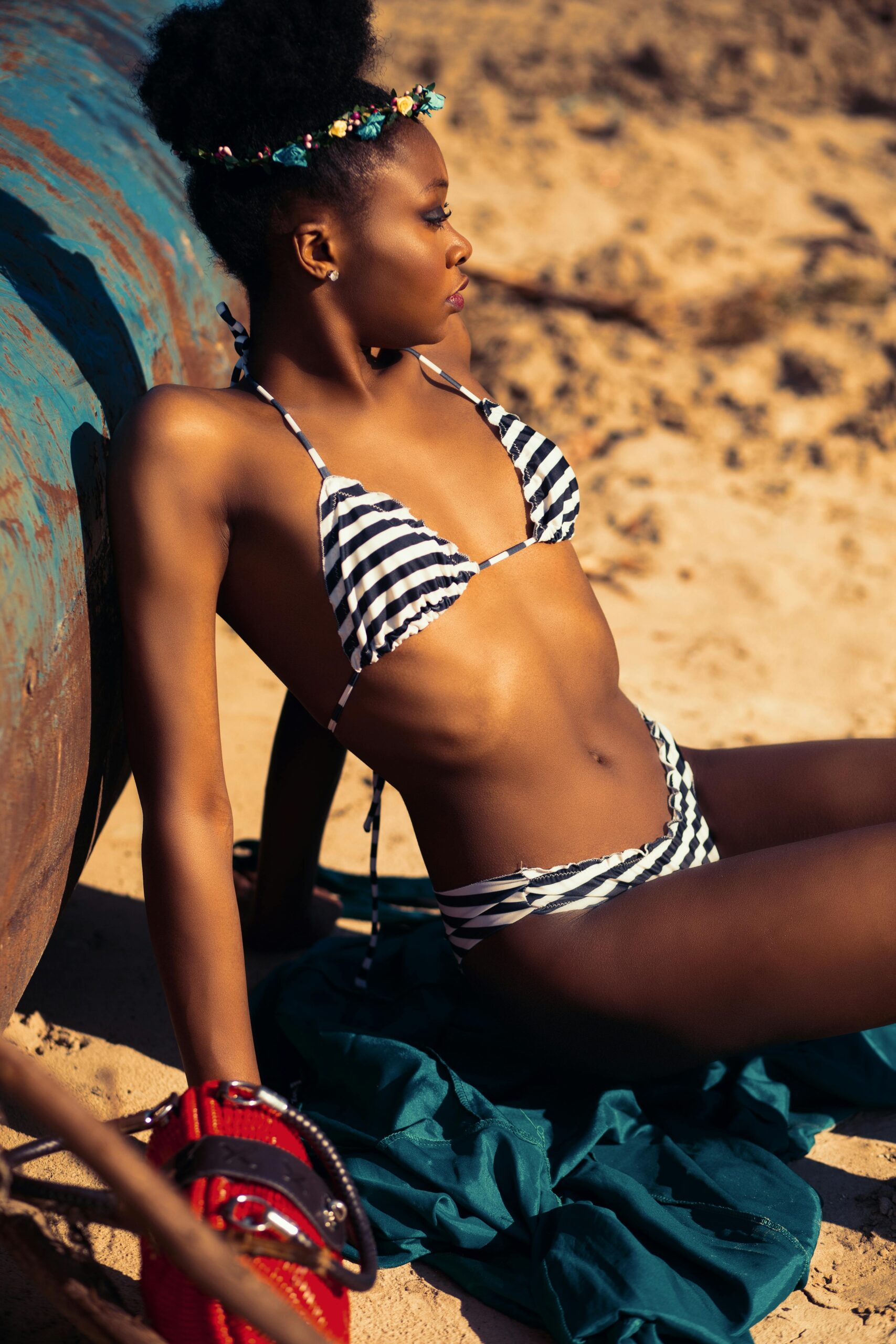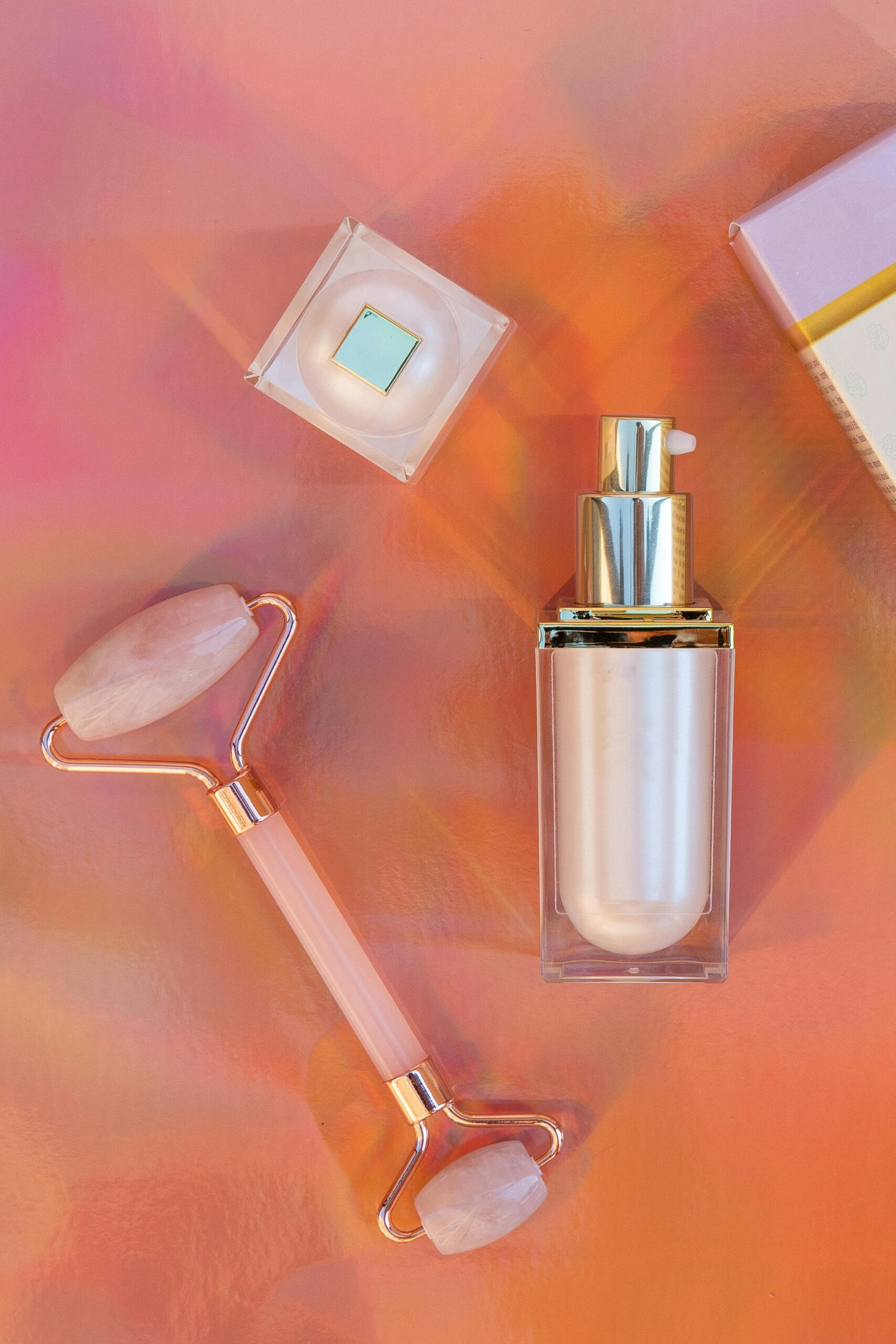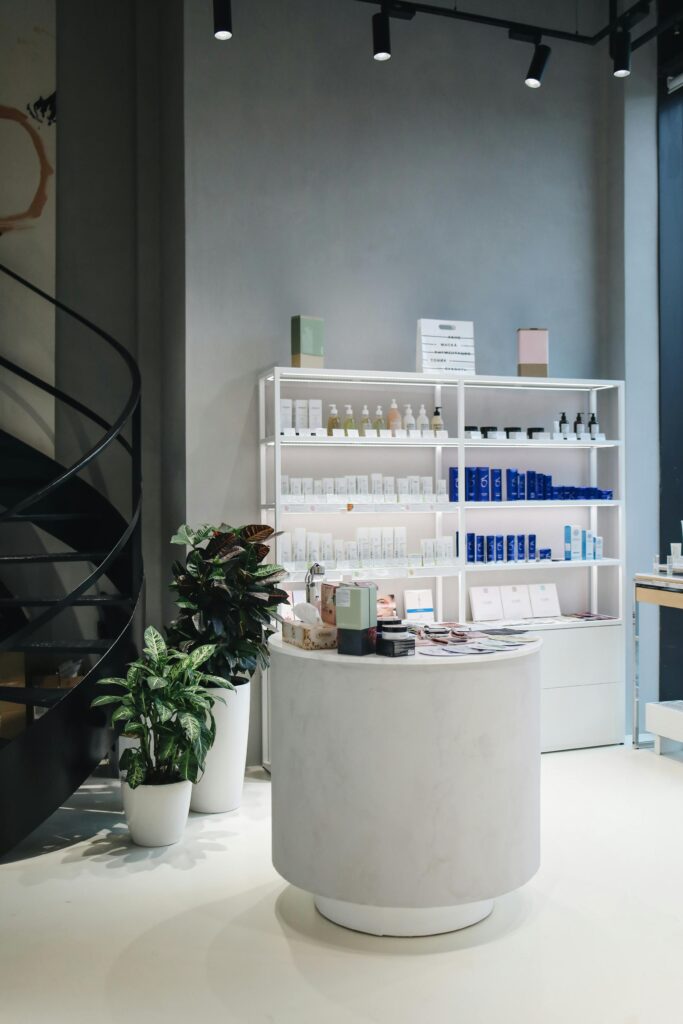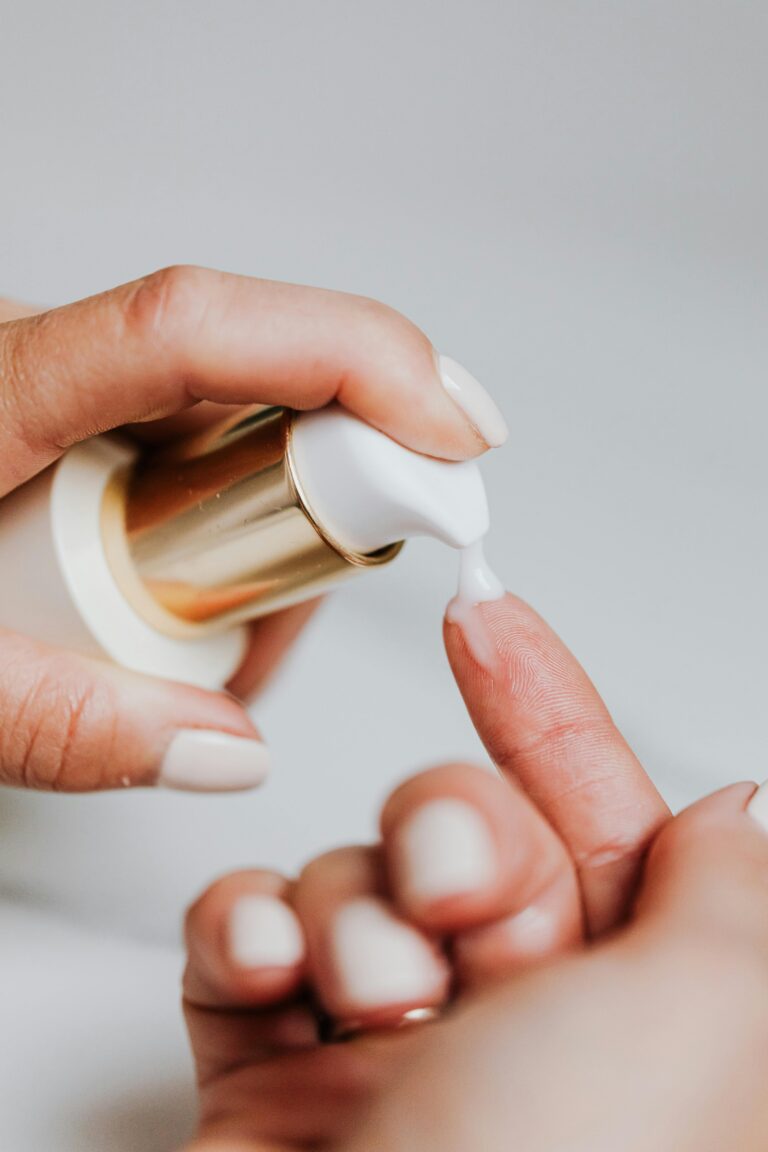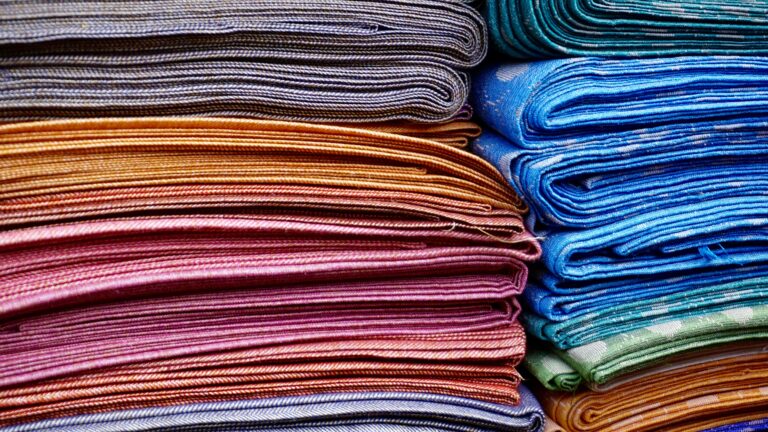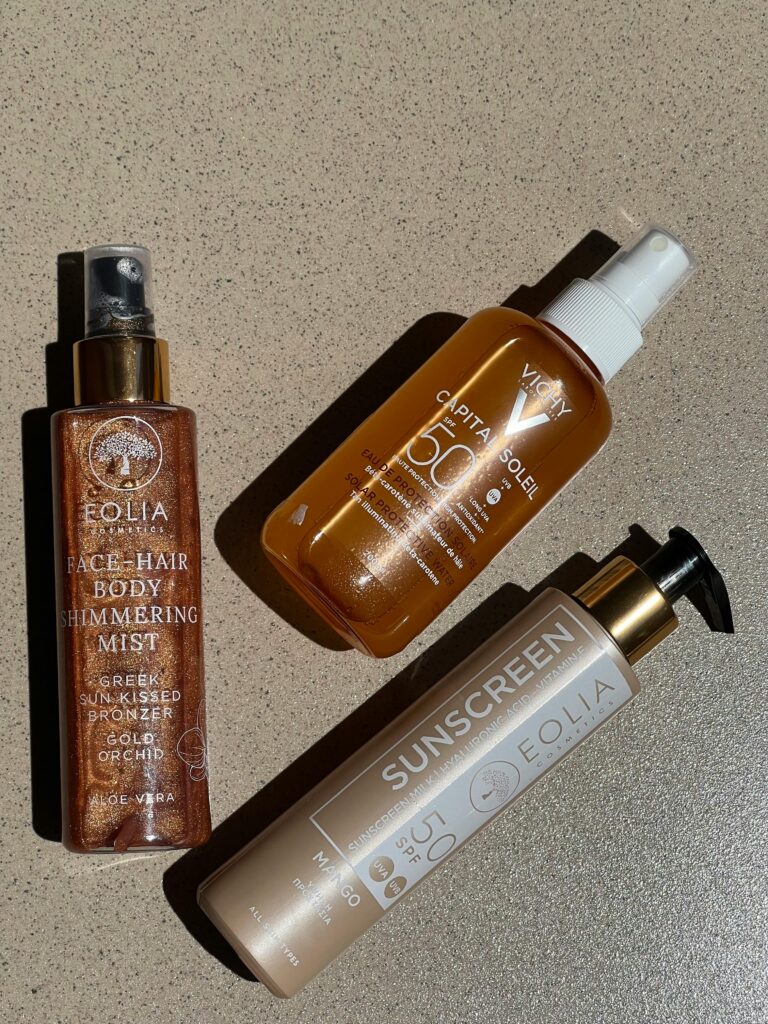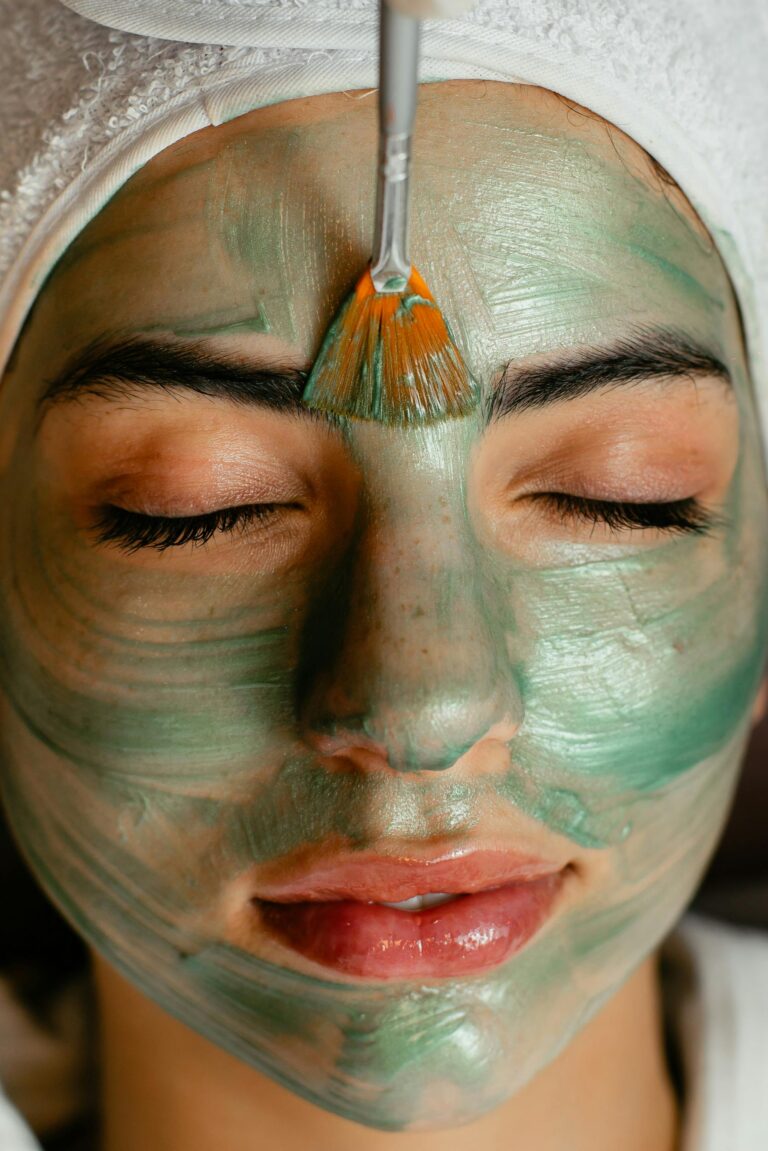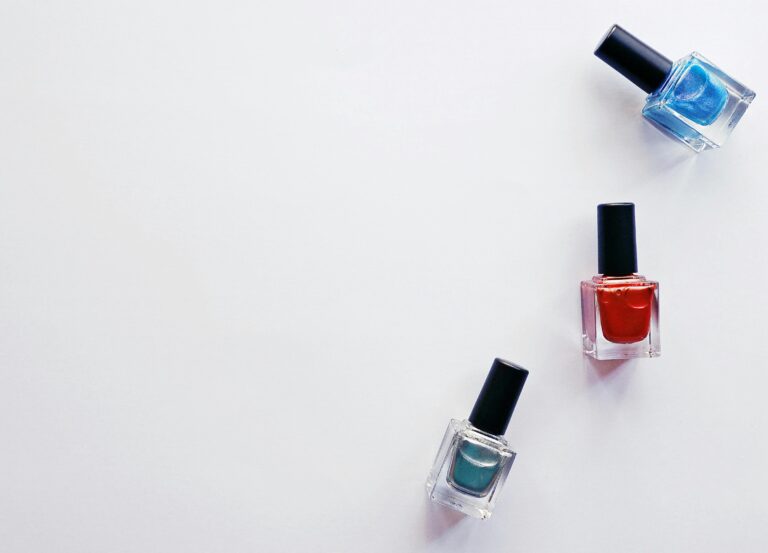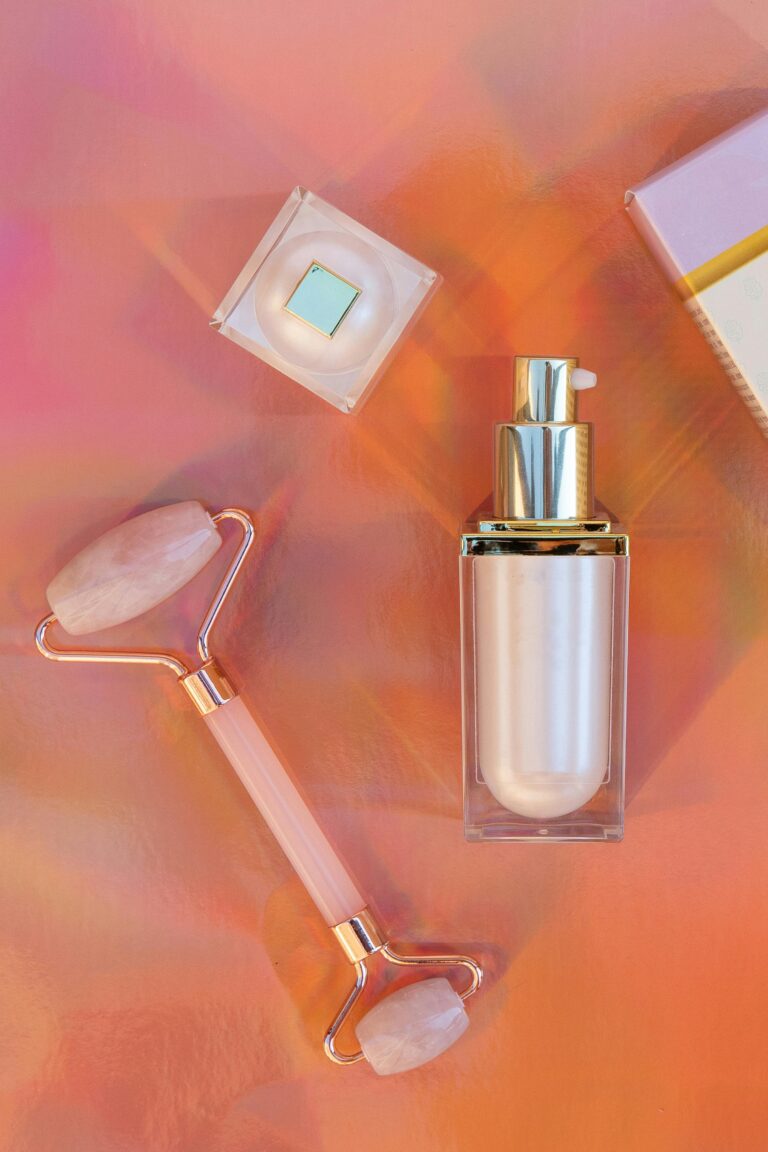The Dark Side of Fake Tanner: Beauty, Safety, and the Cost of Insecurity
That bronzed, just back from Saint Tropez glow has become a modern beauty staple. But the sun is dangerous, and tanning beds are worse – so the industry gave us a safe alternative: self tanner. But is it actually safe? And even more importantly…why do we feel like we need it?
What You’ll Learn About Fake Tanner
- How fake tanner works
- The potentially harmful ingredients found in fake tanner
- The double standard behind American beauty standards
How Does Fake Tanner Work?
Self-tanner products – whether in the form of wipes, creams, foams, or sprays – all rely on the same key ingredient: dihydroxyacetone (DHA). When DHA interacts with the amino acids on your skin’s surface, it triggers a chemical reaction that darkens the skin (this is called the Maillard reaction).

The result? Amino acids darken in color (I’m vastly over simplifying this, but essentially melanoidin molecules express a darkened color) ranging from a yellow to brown. This is why for the palest of us – I’m throwing myself in this group – self tanner can sometimes appear yellow to orange.
The FDA has deemed DHA safe – mainly because most of these molecules bind to the dead cells of our skin. This is why your fake tan fades in patches as those cells naturally shed, because your skin doesn’t shed all at once (you’re not a lizard). While a small amount of DHA may make it to alive skin cells, it’s unclear if there are major health concerns related to exposure.
Are There Toxic Ingredients in Fake Tanner?
Some products contain parabens, which most people know to avoid by now. However, the FDA does have an advisory on DHA. The FDA warns against inhaling or using it around your eyes, ears, or nose (mucus membranes).
DHA Can Trigger Free Radicals
Free radicals are highly reactive molecules that damage cells by stealing electrons, which causes permanent DNA damage.
That sounds pretty scary, but plainly, these free radicals can cause further degradation of collagen, which can cause accelerated aging or sagging skin when used in excess.
DHA Can Accelerate Sun Damage
Free radicals can also make you more susceptible to further skin cell degeneration during sun exposure (a study found that DHA treated skin generates 180% more free radicals during prolonged sun exposure).
Can You Buy DHA-Free Tanner?
Yes – several brands like St. Tropez and Coco Eve offer products without parabens and DHA, meaning that there are tanners that do not expose you to harmful free radicals.
Fake Tanner is Exploitation Disguised as Beauty
I don’t have a peer-reviewed study proving that self tanner is the root of all evil. What I have is a deep discomfort with beauty trends that exist to monetize insecurity.
You might be asking yourself what self tanner did to me to make me hate it so much. And I’m so glad you asked.
1
For most of history, pale skin was a status symbol, signaling that you were wealthy enough to avoid working in the fields. That perception changed when Coco Chanel was photographed with a Riviera tan – and suddenly, sun-kissed skin became aspirational. The pendulum swung, and so did the profits.
2
But here’s the thing: skin tone isn’t just about beauty. It’s also deeply tied to race, class, and history. In some cultures, dark skin is celebrated; in others, it’s still stigmatized. That context matters. What I’m pushing back on isn’t dark or tan skin – it’s the idea that your natural appearance isn’t beautiful on its own and requires a drastic change. That messaging hurts everyone – regardless of the color of your skin.
This post isn’t about promoting paleness or rejecting tanning as a personal choice. It’s about interrogating the standard – one that says your default skin isn’t good enough. That message hurts everyone. Whether you’re lightening or darkening your skin, when a system profits off convincing you to look less like your natural self, it’s not empowerment. It’s exploitation.
Let’s Talk About the Double Standard Behind Fake Tanner
One of the most important aspects of this conversation that needs to be had is an uncomfortable one: there’s a deep racial double standard that we can’t ignore when discussing self tanner – especially here in the United States.
White women are praised for their tanned skin. We get called “glowy,” “bronzed,” or “sun-kissed.” But for people with naturally dark skin – especially Black and Brown women – the same features are rarely celebrated in the same way. In fact, they’ve been penalized for them for decades.
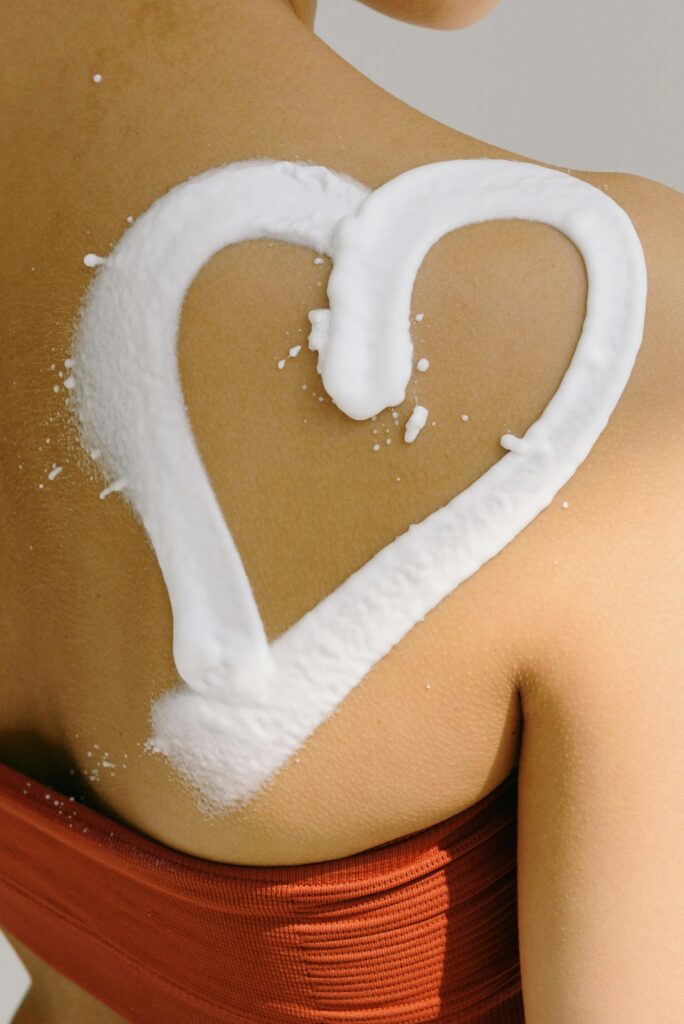
The same tan that earns white women compliments can, on darker skin, be used as an excuse to stereotype, diminish, or exclude. That’s the uncomfortable reality.
Is that the fault of self-tanner itself? Of course not. But context matters. We don’t use products in a vacuum. And when you zoom out and see who gets to wear “beauty” as a costume and who gets judged for embodying it naturally, it becomes harder to say fake tan is just about personal choice.
I’m not trying to point fingers at those who are die-hard self tanners. My intent is to expand awareness. As humans, we operate within our context and rarely step out of it. Those of us who have privilege rarely take a step back to recognize the benefits of that privilege and how that privilege affects those around us.
My Mindset Shift
I started questioning my desire for tan skin while studying abroad after a conversation with my Taiwanese friend, Vanessa. She called me “beautiful, fat pale angel” and helpfully added that if I lost a little weight, I’d be the pinnacle of beauty with my blonde hair and pale skin (in Taiwan).
That comment was wildly loaded and there’s a lot to unpack there, but it was oddly affirming. It was the first time someone had complimented my deathly pale pallor – and made me realize how culturally relative beauty really is. Vanessa worked hard to avoid the sun. I’d spent years trying to fake exposure to it. That contrast stuck with me.
I will forever be grateful for that comment – though I am still slightly bitter that I’m considered fat (Vanessa, if you’re reading this, I still love you).
In the near decade since that fateful conversation, I’ve watched Americans – myself included – spend hundreds trying to look “beautifully bronzed”. Not because it brings us joy but because we’ve been taught it was necessary.
The Real Issue
To be clear, if you like tanning and that’s what makes you feel confident – you should do that. But if you’re using tanner because you feel like you have to – because marketing told you that your skin needs to be warmer, deeper, or glowier to count – then I hope this post gives you permission to stop.
Because your skin, light or dark, does not need to be fixed.
Final Thoughts
Self tanner gives us the glow without the sunburn – but it’s not without consequences. Products containing DHA can introduce free radicals and accelerate collagen breakdown. But even more troubling than the science is the message: that your natural skin isn’t enough.
So, if fake tan makes you feel confident, by all means, glow on. But if you’re only using it because you’ve been taught that you have to, this is your permission to stop.
You deserve to feel beautiful in your skin- no matter your skin tone.

